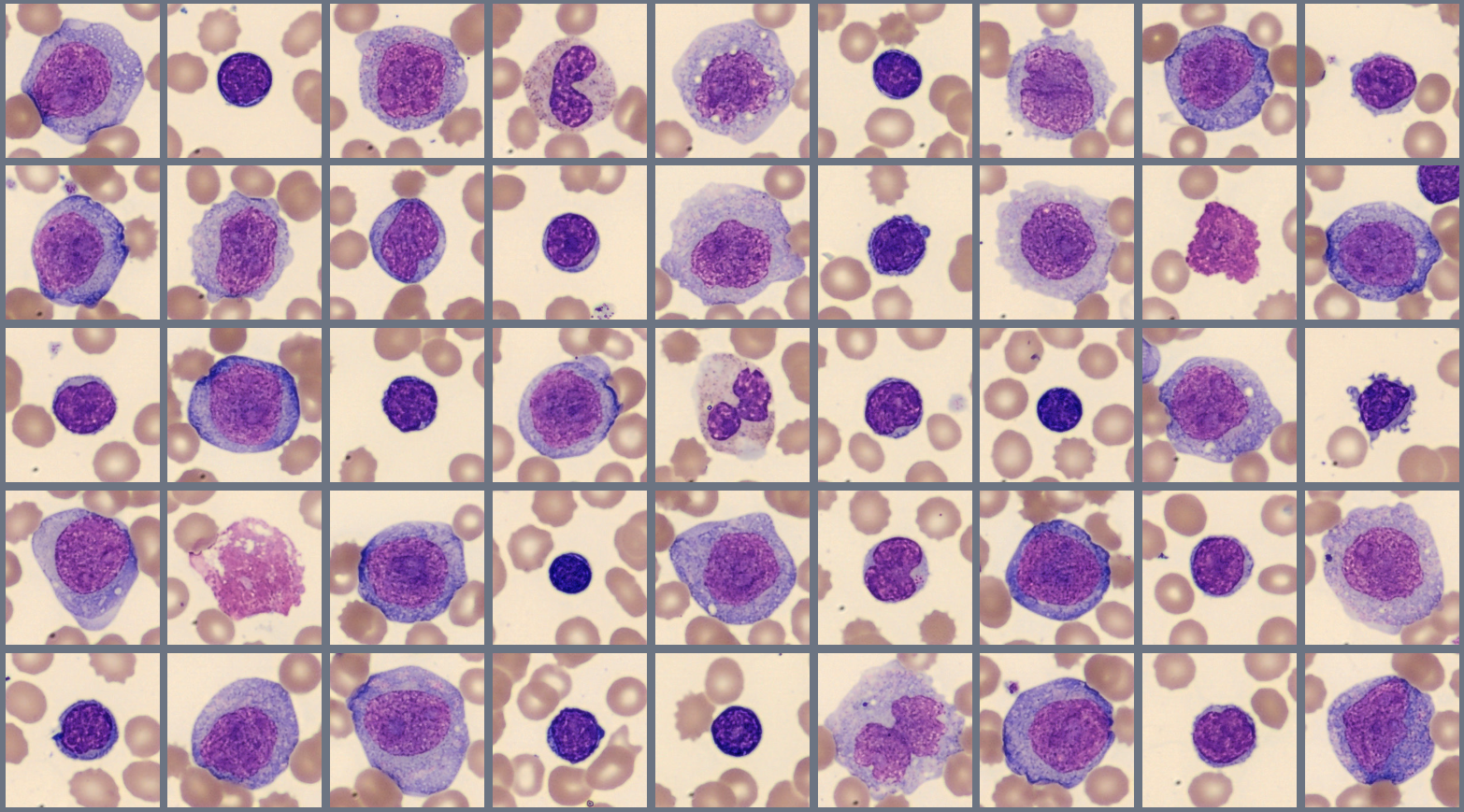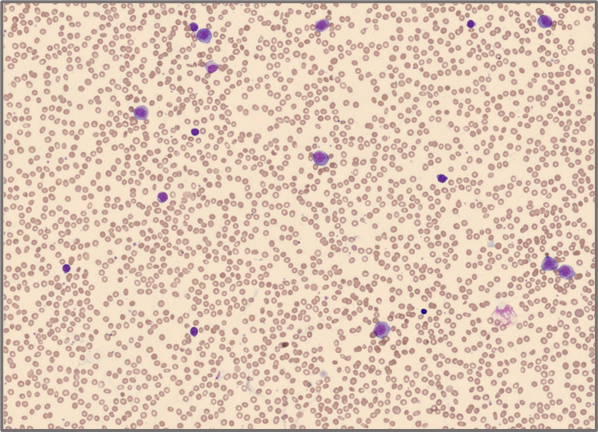CellaVision Global Test 2025:1 – Acute Monocytic Leukemia (AML)
Case Description
A pale, exhausted child arrives at urgent care with a weeks-long history of fever, fatigue, and shortness of breath. Examination reveals gingival swelling, bleeding, and unexplained bruising.
Laboratory Findings
|
Test |
Result |
Reference Interval* |
Unit |
|
WBC |
88 |
4.5-15 |
x109/L
|
|
HB |
7.8 |
11-15.5 |
g/dL |
|
MCV |
85.3 |
75-90 |
fL |
|
PLT |
61 |
150-450 |
x109/L |
| *pediatric sample (Child 6 month -12 years) | |||
Analyzer:
CellaVision DC-1, WG stain
Sample of cells classified in the Global Test 2025:1

RBC Overview

Case conclusion
A pediatric patient was diagnosed with acute monocytic leukemia (AML). Peripheral blood smear examination revealed numerous monoblasts and promonocytes, collectively classified as blasts in the differential count. In addition, an unexplained marked absolute lymphocytosis was observed, with approximately 4% reactive plasmacytoid lymphocytes. Hematologic findings included anemia and thrombocytopenia, consistent with disease related myelosuppression. Genetic analysis identified t(6;11)(q27:q23) and FLT3-ITD mutations, both of which are associated with high-risk disease and poor prognosis.
Global Test 2025:1 Results Webinar
Questions discussed during the webinar include:
- Compare participant and examiner results
- Analyze the morphological characteristics of monoblasts and promonocytes in AML
- Highlight acute myeloid leukemia classification, with emphasis on cytogenetic and molecular markers influencing prognosis
- Differentiate normal lymphocyte, reactive lymphocytes and plasma cells to enhance diagnostic accuracy